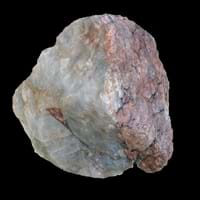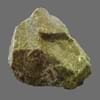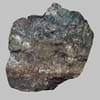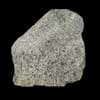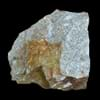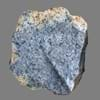Definition
Pegmatite rock is a holocrystalline, intrusive igneous rock which is composed of interlocking phaneritic crystals
Marl is an unconsolidated sedimentary rock consisting of clay and lime
Discoverer
R. J. Hauy
Unknown
Etymology
From Greek pegma, pegmat which means- thing joined together + -ite
From Old French marle, from Late Latin marglia
Class
Igneous Rocks
Sedimentary Rocks
Sub-Class
Durable Rock, Hard Rock
Durable Rock, Soft Rock
Group
Plutonic
Not Applicable
Other Categories
Coarse Grained Rock, Opaque Rock
Fine Grained Rock, Opaque Rock
Texture
Pegmatitic
Earthy
Color
Black, Brown, Cream, Green, Grey, Pink, Red, Rust, Silver, White, Yellow
Beige, Brown, Green, Grey, White
Durability
Durable
Durable
Appearance
Layered, Banded, Veined and Shiny
Rough and Dull
Interior Uses
Decorative Aggregates, Flooring, Interior Decoration
Decorative Aggregates, Floor Tiles
Exterior Uses
As Building Stone, As Facing Stone, Paving Stone
As Building Stone, Roof Tiles
Other Architectural Uses
Curbing
Curbing
Construction Industry
As Dimension Stone, Building houses or walls, Construction Aggregate, for Road Aggregate, Landscaping
Cement Manufacture, Construction Aggregate, for Road Aggregate, Making natural cement, Raw material for the manufacture of mortar
Medical Industry
Not Yet Used
Not Yet Used
Antiquity Uses
Artifacts, Sculpture, Small Figurines
Artifacts, Jewellery, Sculpture, Small Figurines
Commercial Uses
Creating Artwork, Jewelry, Source of corundum, tourmalines, beryls and topaz
Creating Artwork, Soil Conditioner
Types
Granite Pegmatite, Gabbro Pegmatite and Diorite Pegmatite
Clay Marl ,Blue Marl, Red Marl, High Bank Marl, Shell Layer Marl, Under Shell Layer Marl, Sand Marl, Green Marl, Grey Marl and Clayey Marl
Features
Generally rough to touch, Is one of the oldest rock, Source of corundum, tourmalines, beryls and topaz
Generally rough to touch, Is one of the oldest rock, Splintery, Very fine grained rock
Archaeological Significance
Monuments
Not Yet Used
Not Yet Used
Famous Monuments
Not Applicable
Not Applicable
Famous Sculptures
Data Not Available
Data Not Available
Pictographs
Not Used
Used
Petroglyphs
Not Used
Used
Formation
Pegmatite rock is holocrystalline, intrusive igneous rock which is formed by partial melting and dewatering during the process of metamorphism.
Marl forms when very fine-grained clay particles are deposited in water which settles at the bottom of water bodies and are compacted by overlying sediment; the water squeezes out and hence forming Marl rock.
Mineral Content
Apatite, Beryl, Feldspar, Fluorite, Garnet, Lepidolite, Quartz, Silica, Spodumene, Topaz
Calcite, Clay, Dolomite, Gypsum, Micas, Pyrite, Quartz
Compound Content
Aluminium Oxide, CaO, Iron(III) Oxide, FeO, Potassium Oxide, Magnesium Carbonate, MgO, Phosphorus Pentoxide
Aluminium Oxide, NaCl, CaO, Iron(III) Oxide, Silicon Dioxide
Types of Metamorphism
Burial Metamorphism, Cataclastic Metamorphism, Contact Metamorphism, Hydrothermal Metamorphism, Impact Metamorphism, Regional Metamorphism
Not Applicable
Types of Weathering
Biological Weathering, Chemical Weathering, Mechanical Weathering
Biological Weathering, Chemical Weathering
Types of Erosion
Chemical Erosion, Coastal Erosion, Glacier Erosion, Sea Erosion, Water Erosion, Wind Erosion
Chemical Erosion, Coastal Erosion, Water Erosion, Wind Erosion
Grain Size
Medium to Coarse Grained
Very fine-grained
Fracture
Conchoidal
Conchoidal
Porosity
Less Porous
Highly Porous
Luster
Grainy, Pearly and Vitreous
Dull
Compressive Strength
Not Available
Cleavage
Perfect
Not Available
Specific Gravity
2.6-2.63
2.2-2.8
Transparency
Translucent to Opaque
Opaque
Density
2.6-2.65 g/cm3
2.4-2.8 g/cm3
Resistance
Heat Resistant, Impact Resistant, Pressure Resistant
Heat Resistant, Impact Resistant
Deposits in Eastern Continents
Asia
China, India, Iran, Japan, Nepal, North Korea, Russia, Saudi Arabia, South Korea
India, Pakistan, Russia
Africa
South Africa
Ethiopia, Kenya, Morocco, South Africa
Europe
Austria, France, Greece, Ireland, Italy, Netherlands, Slovakia, Spain, Turkey, Ukraine
Austria, France, Germany, Greece, Italy, Romania, Scotland, Spain, Switzerland
Others
Not Yet Found
Not Yet Found
Deposits in Western Continents
South America
Brazil
Colombia, Ecuador, Peru
Deposits in Oceania Continent
Australia
New South Wales, Queensland, South Australia, Western Australia
New South Wales, Victoria, Western Australia
All about Pegmatite and Marl Properties
Know all about Pegmatite and Marl properties here. All properties of rocks are important as they define the type of rock and its application. Pegmatite belongs to Igneous Rocks while Marl belongs to Sedimentary Rocks.Texture of Pegmatite is Pegmatitic whereas that of Marl is Earthy. Pegmatite appears Layered, Banded, Veined and Shiny and Marl appears Rough and Dull. The luster of Pegmatite is grainy, pearly and vitreous while that of Marl is dull. Pegmatite is available in black, brown, cream, green, grey, pink, red, rust, silver, white, yellow colors whereas Marl is available in beige, brown, green, grey, white colors. The commercial uses of Pegmatite are creating artwork, jewelry, source of corundum, tourmalines, beryls and topaz and that of Marl are creating artwork, soil conditioner.
